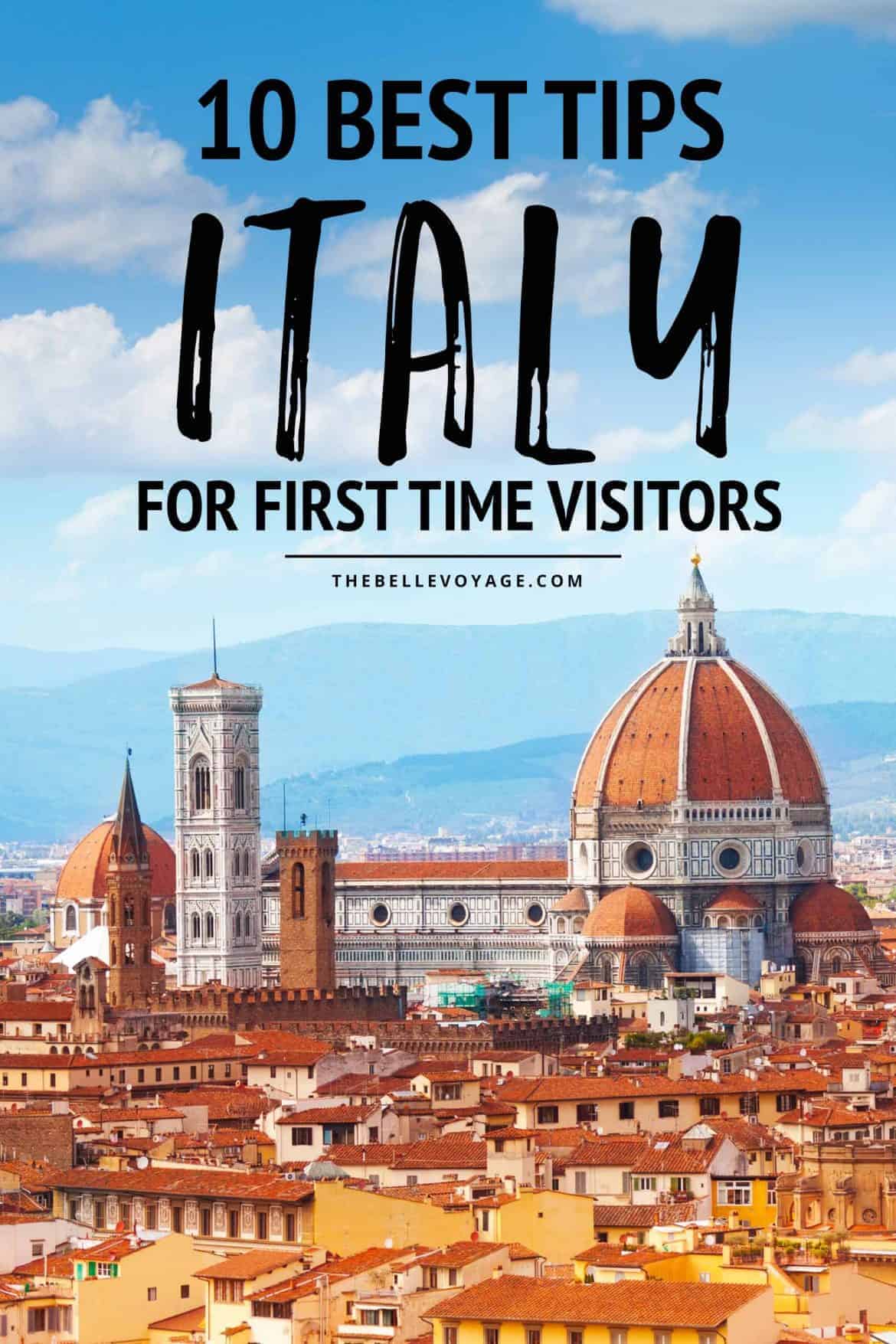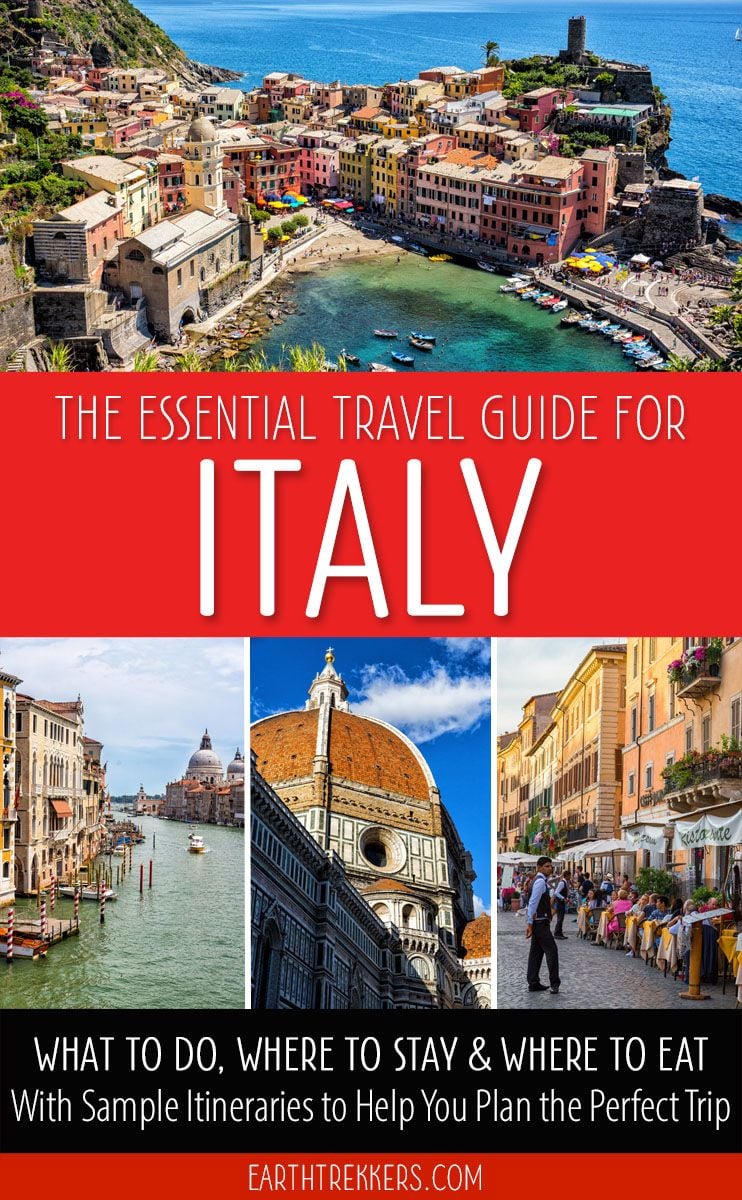Getting Around Italy
When visiting Italy for the first time, you have a few different options for getting around - rental car, train, bus, or ferry. Rental cars in Italy provide the ultimate freedom and independence to access any part of the country. Every destination is reachable, and once you arrive somewhere, you have access to explore further. Services like Hertz offer affordable rates and charges. Just be prepared for narrow, winding roads that can slow travel times. Italy’s extensive rail network also makes train travel very viable, especially if focusing on major cities. Book seats online in advance for the best fares. Trains do run late somewhat often, but are generally reliable. Be flexible in your daily itinerary if relying on public transit.

Pace of Travel
With so much beauty to discover in Italy, it’s tempting to want to see as much as possible each day. However, most first-time visitors will enjoy the experience more by slowing down their pace of travel. Rather than stuffing 3 big cities into 10 days, consider spending longer periods in 1-2 destinations to truly soak in the atmosphere and culture. Localities like Florence, Rome, Venice, Naples each warrant a minimum of 5 full days to do them justice. Leave extra time for unexpected delays or spur-of-the-moment explorations off the beaten path. The leisurely Mediterranean lifestyle is worth emulating during your Italian getaway.
Food and Dining Culture
Cuisine is intrinsically tied to the Italian experience, so budget ample time for dining. Meals are events to savor, not just fuel for more touring. Restaurants take reservations seriously, so plan ahead or expect a wait. Unlike rushed “to-go” service elsewhere, servers want you to linger and fully appreciate each dish. Breakfast is usually light, while lunch and dinner involve multiple courses over 2-3 hours. Don’t feel pressured to order the most expensive wines - house reds are often superb values. And remember, Italians dine very late - most restaurants don’t open for dinner until 7:30pm. Leave your inhibitions at home and fully immerse in the slow food culture of Italy.
Rentals, Reservations and Regulations
Besides transportation, also consider renting equipment like a pocket WiFi hotspot to stay connected on the go. Make reservations for popular museums, tours and restaurants well in advance, especially in summer. Buy travel insurance in case of any mishaps. And familiarize yourself with local rules - things like parking restrictions, toll roads and public conduct norms differ from North America or other parts of Europe. Download translation apps too. With proper preparation, you’ll feel more comfortable navigating the subtle nuances of life in Italy.
Regional Diversity Within Italy
Italy’s 20 regions each have their own flavours, from the lakes and mountains of Lombardy and Piedmont in the north to the vineyards and olive groves of Tuscany further south. Coastlines vary dramatically as well - the Ligurian Riviera contrasts sharply with the dramatic cliffs of Sardinia or Sicily. Cities like Florence, Rome and Venice naturally hog attention, but Italy is filled with equally charming medieval hill towns virtually untouched by time. Experience this diversity by venturing outside major destinations. Rent a car or join organized day trips to gain unique cultural insights missed by flying/freeway visitors. Embrace the surprises around every winding turn in Italy.
Importance of Reservations
No trip to Italy is complete without experiencing iconic attractions like the Leaning Tower of Pisa, Colosseum and canals of Venice. But these places get overwhelmed with crowds, so reserve tickets far in advance, especially in summer. The same applies to activities like gondola rides or guided tours. Booking in off-season lets you skip lines, though you’ll find most sights open year-round. Make reservations for top restaurants in popular areas as well 2-4 weeks ahead. Italians take reservations seriously, so call promptly if you need to reschedule or cancel. With careful planning, you can ensure enjoying must-see experiences without stressful hassles.
Pace Yourself in Italian Cities
Whether exploring historic capitals like Rome and Florence or delighting in smaller marvels like Siena and Lucca, pace yourself to avoid burnout in Italy’s cities. Wear comfortable shoes and stay hydrated - you’ll be doing lots of walking between landmarks. Allot full mornings and afternoons to major sites, plus extra days for wanderings off prescribed paths.factor jet lag into your first few days too. Italians live life at a leisurely tempo, so relax into the rhythm rather than trying to pack everything in non-stop. With sufficient time, you’ll notice hidden treasures like ** neighborhood trattorias and relaxing piazzas** that give a real sense of everyday life not found in guidebooks.
Importance of Learning Basic Italian
While most major attractions post information in English, you’ll find interacting with locals much richer if attempting Italian phrases. Download a translation app and practice common greetings, courtesies, food/drink vocabulary before your trip. Locals appreciate all efforts to converse in their language versus relying totally on English. basic words go a long way towards feeling welcome. Many find Italian fun to pick up, once acclimatizing to regional accents and dialects. Test your skills at markets and cafes - Italians will smile and be patient with attempts. a little language learning helps you connect more authentically with the culture during your visit to Italy.
An Ultimate Guide to Visiting Italy for the First Time
Italy offers incredible depth and diversity for travelers to explore. By slow pacing visits, learning basic Italian, and embracing local lifestyles, first-time visitors can gain richer experiences beyond just seeing top sights. Here are some additional tips for a truly memorable trip.
Best Times to Visit Italy’s Different Regions
Shoulder seasons of spring and fall provide nicer weather for exploring much of Italy before summer crowds arrive. However, Southern regions like Sicily stay warm year-round, so winter can work there too. Coastal towns like the Amalfi Coast see fewer visitors in October-November but still mild temps. Lake Como remains lush and picturesque into early winter. Ski resort towns like Cortina d’Ampezzo light up during Christmas season holidays too. Flex your dates depending where you focus your itinerary.
Bring the Right Clothing Layers
While Italians dress fashionably, pack versatile, comfortable layers appropriate for microclimates varying even within regions. In winter, expect rain and temperatures around 10°C/50°F in the North. The Center and Islands stay milder, with occasional frosts. Have comfortable walking shoes, a packed umbrella and waterproof/wicking clothing. In summer, light breathable fabrics help combat 30°C/90°F heat, especially in popular tourist areas with little air movement. A lightweight packable jacket works year-round for unpredictable weather changes.
Consider Adding a Short City-Hop or Day Trip
Many first-time itineraries stick to just 2-3 Italian destinations. But the journey itself becomes more rich and varied by tacking on a short 2-3 day stopover in a lesser-visited but equally charming city. Historic Bologna, Perugia or Parma provide great cultural immersions off the beaten path. Day trips from your base also provide wonderful context - explore rival hill towns like Siena from Florence, sample coastlines like Cinque Terre or Portofino from bigger hubs like Genoa/Rome. such diversions take planning but greatly enhance travel memories long-term.
Embrace the Pace of Life in Italy
Italians prioritize relationships and experiences over productivity or profits. Meal times provide chances for extended family/friend gatherings. Sundays become community affairs. This relaxed quality of life takes adjusting to for many visitors. Factor ample unwind time into your itinerary versus rigid schedules. Engage locals by taking language/cooking classes during your trip. Wander piazzas without agendas. You’ll appreciate Italy at a profound level by emulating the values of slowing down, savoring moments and engaging fully with place and people. Immerse fully rather than rushing to “do” or “see” everything superficially.
Tips for Budget Trips and Excursions
Italy need not break the bank if planning smartly. Opt for B&B lodging in shoulder seasons versus high-priced resorts. Cook breakfasts/light meals yourselves versus eating out expensive. Buy multi-admission sightseeing cards if visiting multiple venues. Consider hop-on/hop-off sightseeing bus deals. Search out budget museum “free days” too. Good-value regional rail passes exist. Join organized free walking tours run by local student groups too. It all lets you stretch travel dollars through culture immersions versus focusing too much on 5-star experiences. Openness to alternative itineraries unlocks more affordable ways to uncover Italy’s soul.
An Ultimate Guide to Visiting Italy for the First Time
Italy truly rewards those willing to slow down, learn the language and embrace everyday lifestyle rhythms versus just ticking sights off rushed checklists. With advance planning and versatility, every visitor can craft meaningful, memorable trips within any budget.
Tips for Independent Travel in Off-Season Months
Should you wish experiencing less crowded conditions and Italy on a smaller scale, consider independent travel in winter
